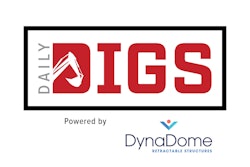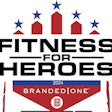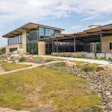Being respectful to different nationalities and ethnicities can help create a unique atmosphere in your fitness center, boost membership sales and give you a competitive edge.
It is Monday at 5:45 p.m. - approaching peak hour in my fitness center. A woman strides purposefully toward my office and asks, "Are you the manager?"
"Well, yes, ma'am. I am," I answer.
"When are you going to change the name of that 6 p.m. class? I find it degrading and offensive," she says. And, she's not finished. "And I find it particularly distasteful that you are advertising the class as a summer special so that we can 'fit into our bikinis.' This is extremely sexist and offensive to all women - and especially women from my culture."
I've been manager of the facility for only three weeks, so I furtively search the group exercise program for the name of the class she finds objectionable. "Oh, do you mean the 6 p.m. Guts and Butts class?"
"Yes. A number of my colleagues and I find this distasteful. We are prepared to take up a petition of signatures if you continue to use that name."
I try to appease her. "We will certainly look into it, and see what we can do, ma'am. I understand what you are saying, and will see about changing."
I now have one unhappy member, and I'd better do something quickly. Fortunately, this was a relatively easy issue to solve. I simply changed the name of the class to a more generic one, like "core training." It was a good lesson, however, because this member was correct. The name of the class could easily be seen as offensive and, at best, juvenile. However, sometimes issues are not this clear-cut. How do you market your programs and services to best serve a demographic with a heavy multicultural clientele?
Know your demographics
"It is essential to know the age and cultural demographics of the community your club is operating in," says Tracy Christiansen, a membership consultant for the Sport and Health Group in the metropolitan Washington, D.C., area. "Some of our clubs have a [large] eastern European client base who really like the traditional, spa-type feel with a wood panel sauna and steam room as part of the environment. In other areas, there is a high concentration of Asian and East Asian communities with their trend toward extended families. [For these,] our programs and activities promote family memberships and activities."For many of the European cultures, fitness is not about pumping iron or jumping on a treadmill to work out solo or with a personal trainer. Christiansen feels that for many of these cultures - particularly those over 40 - exercise is associated with traditional physical education classes. This is where marketing your group exercise program becomes particularly important. "For larger clubs, team activities (particularly volleyball and basketball) can be great ways of attracting these types of members to your club," Christiansen says.
Teresa Fortunato, director of operations for L&T Health and Fitness, Falls Church, Va., agrees. "In multicultural organizations, there is often more of a tendency toward competitive games not often found in a standard U.S. facility," she says. "Squash for the more vigorous, and even table tennis and darts are seen as essential components of a fitness environment for some cultures." Fortunato also recommends "classes that may appeal to a specific culture, but not necessarily be restricted to this culture. Classes like African dance, Caribbean rhythms and Zumba can reach across all ethnicities, and provide fun workout alternatives for members."
MBWA and the cultural balancing act
This is not to say you should concentrate your marketing on only one specific demographic. Demographics within an area can change, especially if you are in a rapidly changing area like Washington, D.C. There is also a significant proportion of your members who prefer the standard western model, where pumping iron and/or the pursuit of sweat-inducing exercise via a treadmill or group cycling class are the norm.While an awareness of your cultural demographics is essential, so is another oft-forgotten aspect of facility operation: a staff that practices MBWA (management by walking around). Ajola Berisha, an Albanian national and personal trainer now based in Chicago, Ill., has worked in the U.S. as a fitness specialist for seven years. "I have worked at a number of fitness centers, and I always find that a manager who encourages staff to walk around and interact with members has a better feel for what members want, what attracts them to exercise, turns them off, etc.," says Berisha. "If there are open lines of communication between staff and management, you will find marketing efforts are more successful both inside and in terms of attracting new members of various cultural backgrounds."
Staff diversity
Employing staff members from diverse cultures is a great way to gain insight into what doesn't work in terms of marketing your facility and services. Carlos Carpio, a San Salvadorian national, has worked in the U.S. as a fitness specialist in California; Washington, D.C.; and Virginia. "With a large Latino population, you often find people gravitate to an instructor from their own cultural group," says Carpio. "First of all, the language barrier is broken, and, because you also share similar customs, a bond is created. [Hiring a diverse staff] is a great way to find out what [members] are looking for ... in terms of programs and services."With more than 5,000 members and 140 different nationalities, The World Bank Fitness Center in Washington, D.C., has arguably the most diverse membership in North America. Dosseh Tossou, a native of Togo, has been the front desk person at the World Bank Fitness Center for nine years. Dosseh, who is fluent in four languages, stresses the importance of "acknowledging different cultures and respecting their customs and behaviors. This may take some research both formally and on a day-to-day basis. By closely observing individuals and how group cultures respond to various situations, you can establish a certain set of behaviors. For example, even the way you say hello and goodbye can have different meaning for some cultures."
There is more to establishing cultural respect than learning a new language. Patterns of behavior can make a big difference in how your staff is perceived. "While some cultures are very casual, others are much more formal. This doesn't mean that these more formal cultures are necessarily less friendly," Dosseh says. "This is an established code of behavior they have passed down through the generations. By respecting these behaviors, you, in turn, get the respect of your members, making it easier to promote and market your services."
Culture-neutral language
Cheri Bonnet has been in charge of health promotions for the World Bank Health Services department since 1993. Part of her role is to promote various wellness programs to the bank's 10,000-strong international staff members. She has worked closely with the fitness center, medical clinic and occupational health areas in promoting services to the 150 nationalities of the World Bank staff. When dealing with multicultural clientele, "communications should be clear, succinct and to the point," Bonnett says. "Fitness centers often have their own esoteric jargon that is not understood by different cultures. You should also avoid the body beautiful type of advertising that emphasizes slim ... muscular bodies."Not only do some cultures find this offensive, but Christiansen says she feels that more than anything else, they see it as misleading advertising. "The most common concern, and sometimes outright fear, we get from members new to the United States is that living here with rising obesity rates will make them fat," she says.
Common sense considerations are also worth mentioning. Humor that has political, religious or sexual overtones should be avoided at all times. "If your communications are clear and concise and jargon-free, you should be okay," Bonnett says.
Pool and shower areas
Shower and pool areas can be a cultural hotbed if clear polices are not in place. David Vincent was a licensed pool operator for many years before opening his own personal training studio in Annapolis, Md. "You need clear signage of where wet and dry areas start and end, and also clear policies regarding what is acceptable in terms of swim wear," he says.If you are marketing specific swimming programs, you also need to let your customers know that they will be in relatively close proximity to other members, and that there are specific dress codes in place. "This includes hygiene considerations in terms of showering before entering the pool, etc.," Vincent says.
While many fitness centers take it for granted that people will be aware of these types of issues before undertaking a pool-based activity, Christiansen says follow-up by a membership consultant is essential. "Just directing people to a pool and expecting them to have the same standards of behavior is asking for trouble," she says. "If a member shows a real interest in aquatic activities, membership policies should be explained clearly. This will help avoid future unpleasant situations."
Some hidden benefits
In addition to increased membership sales, an effective multicultural marketing program can have other benefits for your facility. If you actively listen to what your membership wants, you may find that your fitness center is one step ahead of your competition. This is particularly relevant in group exercise. George Kassouf, an international presenter and group exercise coordinator at the World Bank Fitness Center, agrees: "The types of classes we offered nearly 10 years ago were never heard of in commercial clubs in the United Sates. Now, classes like yoga, meditation and Pilates are standard in most clubs." Fortunato says that this is "primarily due to the different perspective other cultures bring to the fitness world. These cultures don't see fitness purely as a physical pursuit, but [as] a total mind/body connection. While our clubs have started to offer these activities over the past five years or so, some of the international corporations had these types of classes many years before."A diverse membership also helps foster further membership from various communities. Once your members are happy, they will be only too happy to recommend your facility to other people in their community.
The R word
Catering to a multicultural clientele is still challenging, even when you know your demographics, employ a diverse staff who practice MBWA, use culture-neutral language in your marketing materials, and have all of your policies in place and clearly communicated. As the old saying goes, "You can't please all of the people all of the time." There will be times when people ask for special considerations that may alienate some cultures. You have to make judgment calls based on your experience and instinct.A familiar controversy these days is the celebration of traditional U.S. holidays like Christmas, Thanksgiving and Halloween. Again, there is no hard and fast rule here. It will be up to your management team as to what approach you take with these celebrations. "There is really no problem as such, at least here at the World Bank Fitness Center, with recognizing these traditional American ... celebrations. If this recognition is done in a low-key, respectful manner, free from shrill, false affect and enforced frivolity, we find there is usually no problem," Dosseh says.
There are some words and sentiments that cross all cultures, and one of them is respect. Respecting each other, and our origins and cultures, is the first step in building a successful multicultural program.




































